How to Research
Antique China Values
(& Other Collectibles Too)
By Peter (admin)
In this post I'll share how you can find your antique china values without having to pay an expert. In fact, if you can follow the article fully you will become your own expert.
1) You will learn how to search properly to actually identify what you have in your possession without suffering from GBO (Google burn out). If you are already using advanced coded searches, skip this bit.
2) You'll also learn how to access the free online hidden price guides (that have 1000's of photos to help you).
3) The main thing is, if you take time to really engage with this article and get to know the content, you will stop having to rely on experts (and paying them accordingly) and you will become your own expert. Sorry this article is a bit long, but there's lots to learn and sometimes we have to get a bit epic to get somewhere.
This process works for antique china values, but also for other collectibles & furniture too..
In this post (for those who want to research the value of their item themselves):
Action # 1. Cure your Antiques Roadshow disease (diagnosis and remedy)
Action # 2. Don't give up! - Hack your way into the best online price guides
Action # 3. Don't let yourself suffer from Google burn out - tame the abyss - learn to speak fluent Google
Why Try to Self-Value?
According to Forbes, the boomer generation have accumulated over $30 trillion dollars in collected wealth . . . which, sadly, their offspring mostly have no interest in. Hence the issue.
Antique china values, can be researched online, by going to sites like Liveauctioneers.com , Barnebys.co.uk and others, but there are deeper issues you have to solve first like, having to properly identify what you have before you start, knowing if it's real or fake, working out how to use the search filters and, last but not least, believe you can do it without an antiques expert.
Online value research has a knack to it, but more than that, it's hard grunt work and
any success you have depends upon whether you prioritize time or
money. But I am here to tell you, yes, you can research online china
values yourself online, and if you read this article closely, you will,
indeed, have the information to do so.
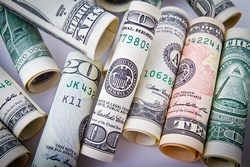
Today's blog post is to do with helping my readers find accurate pricing information online themselves. So, in a sense, helping them be confident to self-research the value of their wares.
I am very sympathetic to people who would like to book an expert only as a last resort, after trying some research themselves - and, after all, a written report from a paid expert is only really necessary for estate tax purposes, estate planning, equitable distribution, or tax-deductible donations.
In terms of knowing the
value either to sell, keep or sweep, people can easily research the
value of their items themselves, but few know where to start.

So the question is; do we just give it all away to charity and goodwill? . . .
Or do we set about doing something proactive - making the right decisions about how to categorise the keepers, sleepers, sellers, weepers, and heavers? You can find out more about these categories in my free ebook "Valuation Bookcamp".
So onto the main article:-
Action #1 - Cure your Antiques Roadshow disease (you may have a bad case of it - here's the remedy)

This stage is short but oh so sweet. Do this and you are off to a flyer.
You
would be diagnosed with Antiques Roadshow disease if you'd love nothing
more than to wait in a queue a mile long for a TV presenter wearing a
bow tie and half-rim specs to give you a couple of minutes of his
precious time.

We need to move away from being frozen in awe of TV celebrity experts and certified appraisers
in order to free up a new mindset – because if we do this we suddenly
realise we can happily begin researching some facts and figures about
our items in order to inform our own opinion.
The secret sauce of experts
Many of my readers have already discovered that the secret sauce of the experts is they know (or can look up) what an item historically fetches at auction.
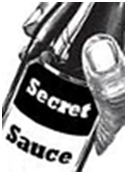
In many cases, thanks to the internet, we can know this too. The internet is an abyss, yes, but once we learn the nuances of a few simple tools the web hides away we can do some pretty accurate estimation of our vintage and antique china values.
Once you have a good route map through the abyss, which, hopefully this post will give you, sourcing accurate pricing information and antique china values becomes far less difficult.
Remember, with all its faults, the internet is, without question the most powerful knowledge and networking tool ever invented by mankind to get to know antique china values, but you have to know how to harness its power and ignore its foibles and snares (Google burn-out, a.k.a. GBO, being one of them . . . see Stage #3 below).

A bit of practice and thinking outside the box makes all this possible, even for those who consider themselves 'low tech'.
Consider yourself to be cured of Antiques Roadshow disease from this moment on.
Action # 2. Don't give up! Hack your way into the best online price guides
Apart from eBay which needs separate consideration (see free Valuations Bootcamp mini-guide here), learning how to get inside the various auctioneer platforms is the key to researching the value of your items.
Some auctioneer platforms are open source, but you need to be prepared to learn how to get into them. Some are closed, requiring monthly subscription. Some are in-between the two.
The point is . . .
TAP THE FREE RESOURCES
IGNORE THE DEMANDS FOR SUBSCRIPTIONS
. . .Have a go at some self-valuation research before you start shelling out your hard-earned cash and eating into the value of your assets.
There are a mind-blowing, 15-20 million past lots going back a
decade for us self-researchers to seek out items similar to ours. My mini-guide accompanying this blog post gives my full working resource list . . . [Valuations Bootcamp ....more]
Remember, any of the currently open platforms may change their policy to a closed one at any time. This is a growth industry with constant acquisitions and mergers. So let’s do this sooner rather than later.
I’ll go through details of how to get the best out of them in future posts and workshops. Suffice to say, each database has its own concealed entrances and ways of working.

Of course, there is always room for getting certain items checked out by an expert (email me direct if you need help with this --> peter
@theclayartist.com).
Your Route Map Unfolded

Meanwhile, let’s make a big picture roadmap of the valuation landscape.
The auctioneer website to go to depends upon the type item you are
researching?
Our stuff can be separated into three main tiers - Top End, Middle and Lower End.
Think in terms of which platforms best suit each sector of vintage/antique china values.
The Luxury End
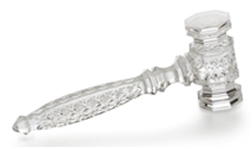
If you have a prized art object, rare artifact or highly sought after item, you need to check out the sold listings of the top end auctioneers like Sothebys, Christies and Bonhams. You can do this efficiently by using a touch of Google-fu (covered in stage 3 below).
Another very good resource for luxury research is www.barnebys.co.uk (click on sold listing and then get to know the various filters). Barnabys acts as an aggregator for the upmarket auction websites ands their sales results.
Overall, it's a good idea to look at the landscape within these luxury listings, especially for antique china values, because you get to know what quality looks like, and what it DOESN'T look like.
The Middle Sector
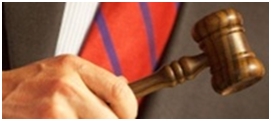
If you have something nice whether collectible or old, but not necessarily the ultra top luxury bracket of antique china values, you need to be looking at the middle tier of auction houses which comprise of the boutique auctioneers, the regional establishments, the online houses and the aggregators (who work in partnership with all of the above).
This segment, for most of us, is the sweet spot in terms of researching values.
To access past sales records and attained values for these auction houses over the past 10 years, the best place I have found so far is Liveauctioneers.com.
It is completely free to access at present. Hopefully, it will remain so.
Be warned, all the info is there, but it takes a bit of digging and a bit of pit-bull determination to find how to use this amazing resource.
The Popular Sector
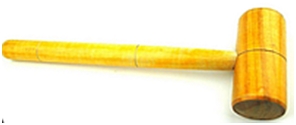
So we have the top end auction sales listings and the sweet spot in the middle, but what of the popular end?
This
sector of sales listings is extraordinarily useful as it gives a
sharply focused overview of antiques and collectibles found in a wide
range of estate sales and therefore, by the law of averages, more likely
to be found in our own homes.
My 'go to' platform in this
sector is the excellent and beautifully named ETBH.com (which stands for
'Everything But the House'). Since 2008 they have been going into
homes photographing and cataloging the contents and then auctioning the
items individually online to a worldwide audience. They are the kings
of online estate sales. They don't just deal with the lower end/popular sector, but they have a lot of info within this range.
ETBH amounts to quite some database of pricing information so learn how to hack into it.
It's only rival for the lower end market is eBay. The trouble with eBay is that people make rookies errors and get the completely wrong idea about what their item is worth - don't forget my free mini-guide "Valuation Bootcamp" which covers this topic.
On
this site's past lots database, we can get an overview of more commonly
seen items and what they sell at an online estate sale for. The prices
attained are often, but not always, at the more popular end of antique china values.
Again,
the EBTH database is great, but again, has its own cryptic ways, so don't give up if it doesn't seem obvious how to progress through the site. Keep on hacking!
Action # 3. Don't suffer from Google burn out - tame the abyss - learn to speak fluent Google


Welcome to the Google-fu dojo where GBO prevention (Google burn-out) is the ninja-skill we study.
Cranky, tired. Shouting at the dog? Sick of researching antique china values? If you lose the will in this way, you are suffering from GBO.
Take some time-out, Grasshopper.

The key to finding vintage/antique china values is to first identify what you have, then find other examples similar to it and see what they tend to sell for. This process can be tricky, but turns out to be especially difficult with unmarked china items.
Efficient use of search engines is the key here. When I say search engines, I mean Google, as Mother Google allow us to 'code' our searches to ease our GBO.
There are many ways to enhance your search techniques to achieve more accurate and precise search results but we can begin by starting to think differently about search – using 'power searching' techniques, even if we consider ourselves relatively 'low tech'.
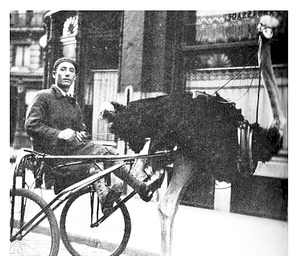 You can do this - even if you consider yourself low-tech, non-techie etc
You can do this - even if you consider yourself low-tech, non-techie etcLet’s take a difficult subject: the area of Chinese blue and white china
with indecipherable markings . . . . quite a banana skin for the
average person without ninja-search skills.
So a newbie researcher who owns a blue and white Oriental vase with an indecipherable marking might start with a keyword phrase that might look something like this:-

chinese vase blue & white (image search)
This is an epic
fail – bringing up nothing but 704,000 results of every type of vase
imaginable but nothing useful for valuation research. This search term
brings up stuff related to news blogs, stuff for sale on swanky websites
and other detritus, but nothing enlightening about antique china values.
We need to narrow it down a bit for Google.
Let’s
say, for example, we could pick out a distinguishing feature. Say we
had a 6-sided vase. Let’s speak to Mother Google and see what she tells us on that.
So we put this search term in:

vase hexagonal OR hexagon OR '6-sided' blue white (image search)
Note: the capitalised word “OR”
Note: we exclude the word “Chinese”
The word “OR” being in capitals denotes we just wrote it as ‘code’ rather than as part of the search term.
If
Google were a person and we were explaining long-hand what we wanted
her to search for, the conversation might go something like this:
“Hi
Mother Google, I have this six-sided blue and white vase and was
wondering if you could find some photos which relate to vases of this
type, bearing in mind that websites may be using different words to
describe the same thing like ‘hexagon ’ or ‘hexagonal’ for example,
please.”

Google responds to this politeness with a search which immediately
crystallises the world of hexagonal blue & white vases. We see that
this is indeed a Chinese style and those items shown on the photos
range from the top end of antique china values to the lower end.
If we spot something that might
look similar to ours on a photo from, say, the above-mentioned EBTH, we may be tempted to immediately click over to EBTH to see.
However, this might not be the best Google-fu strategy at this point.
Before we rush over there, we might want to just try another bit of simple power searching first.
Sometimes it works a treat, sometimes it doesn’t.
We want to just get a little window on the EBTH website without having to click there just yet.
So we put in this search into Google:

site:https://www.ebth.com "hexagonal" blue white vase (image search)
Conversationally, we would be asking this:
“Hi
again G, could you please look only on the EBTH website for blue &
white vases, but the word ‘HEXAGONAL’ must be on the page somewhere”.
This
second search gives us a clue that our type of vase is definitely
similar to some of those shown on EBTH. We know our vase is not the
type of blue and white vase that was showing up in our previous search
on the more swanky websites.
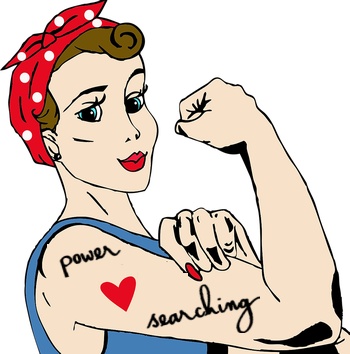
So these two simple and quick power
searches gave us an immediate context to our vase. It may not, sadly,
be a sleeper. We now click on the image and go to EBTH to see that it
sold in a lot with other items for $30 USD.
We go to a couple
of other auction websites to double check and see a pair of our exact
vases has been estimated to be worth an auction price of $100 - $150 at a mid-range UK auction house. So, a sleeper, maybe not, but a seller, yes.
During research for valuation appraisals, there are six different categories to think about: Sleeper, Seller, Keeper, Weeper, Heaver, Other (click here to get the free mini guide "Valuation Bootcamp" where I explain all these categories) . .
.
And Finally to . . .

Treasure or Trash? Stash or Burn? How do you know your antique china values without paying an expert? Answer: You unearth hidden information waiting to enlighten you if only you scratch a little deeper.
One of my readers said - "It's easy to find the things that are there. Harder to find the things that aren't“.
Don’t get taken advantage of by not knowing your antique china values.
Often the information is out there but you need to look harder, longer and with more insider knowledge at your disposal.
Be patient, let's get past the obvious and I'll help you to delve deeper and unlock the mystery contents of your garages, attics and cabinets...

So, with a little bit of knowhow, we don’t have to be the voice in the forums saying ‘does anyone know how much this is worth?’ We can find out ourselves in a couple of clicks.
How do I know this stuff? Over the years, working with experts on antique china value appraisals for my readers, a few bits of brain fluff have inevitably rubbed off.

Years of experience gives these appraisers the skill of 'instant
recognition'. With a bit of quick research in the right places we can
achieve 'nearly instant recognition'.
But is a little knowledge a
dangerous thing? Perhaps, but at least we can develop a 'nose' which
gives us a very good place to start sniffing, and we will no longer be
that little voice in the forums saying "anyone know if this is worth
anything?"
@theclayartist.com.
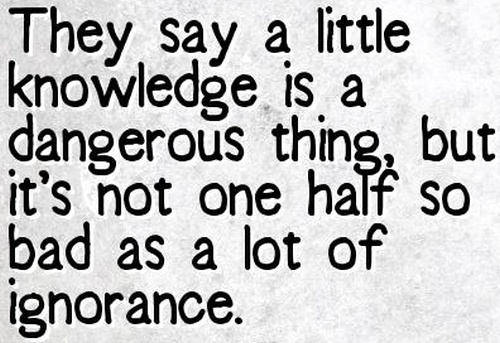
Antique China Values - The Roadshow Trip
Together
DISCOVER | VALUE | SHARE
Experts want money to appraise your item. Period. That's the way the world works.
The questions are:
- How long it is going to take?
- How much is it going to cost?
- Who is appraising the appraisers?
That's where I come in. We'll look at the appraisal market in this article. There's some stuff you need to know.
If you need a bit of personal help in your investigations into antique china values, I'm here to help!
Return from Antique China Values to Figurines Sculpture homepage or alternatively back to Tier 2page
Ask, tell, share . . .

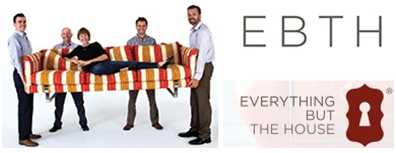
New! Comments
Feel free to leave a comment in the box below, but use the contact form if you have a pottery mark query, as we answer those in the 'China Chat' section, not here on facebook comments. THANKS!